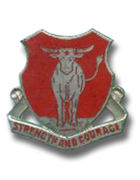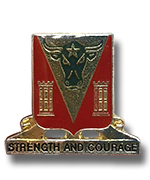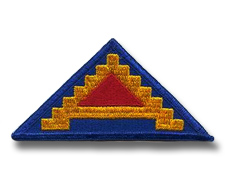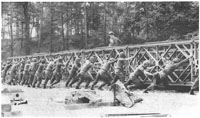| If you do
NOT see the Table of Contents frame to the left of this page, then
Click here to open 'USArmyGermany' frameset |
||||
|
82nd
Engineer Battalion |
||||
|
|
||||
|
||||
|
|
||||
| Battalion History | ||||
 82nd Engineer Bn DUI
82nd Engineer Bn DUI |
||||
 82nd Engineer Bn DUI (approved July 12, 1977) 82nd Engineer Bn DUI (approved July 12, 1977) |
||||
| If you have more
information on the history or organization of the 82nd Engr Bn, please
contact me |
||||
| 1969 | ||||
| (Source: Email from Arnold J. Vogt) | ||||
| I served as a First Lieutenant, commanding officer of Company A, 82nd Engineer Battalion in Bamberg, Germany in 1969. My initial assignment -- as was the case for quite a few ROTC officers graduating EOBC in Ft. Belvoir, VA at the time -- was deployment to Germany to an Ordnance Unit in order to implement the Army's REFORGER program -- bringing military equipment in Germany and Europe up to readiness standards to meet the threat of any attempted Soviet invasion in Europe, while the US was busy in Vietnam. My first assignment was as Maintenance Platoon Leader in the 71st Maintenance Battalion, Schweinfurt, Germany. The Officer's Roster was only halfway full -- and it seems we were always on alert for a week at a time at Hohenfels or Grafenwoehr near the Czech border holding maneuvers to deter any Soviet thoughts about invading. I believe I was on that border during the time the US and Soviets had the big Face-Off with their tanks -- but am not sure. I have not been able to research the dates and year in which that happened. At some point during my service with the 71st Maintenance Battalion, the Engineer-affiliated Generals in Washington, DC decided that Engineer Officers should be assigned to Engineer units, which were highly understaffed in Europe, as well, given the large deployments to Vietnam which had heated up greatly by then. So my Engineer colleagues and I finally received orders to the 82nd and other combat engineering units in Germany. Two of my fellow officers from the 71st Maintenance Battalion in Schweinfurt relocated to the 82nd in Bamberg where I was ordered. We finally got to build bridges and do the work that Combat Engineers are trained to do. I do not regret all the things I learned about vehicle repair from my days in the Maintenance Platoon in Schweinfurt -- they serve me well to this day. However, it was rewarding to command an Engineer Company, build a pontoon bridge across the Main River, and help train the troops in both warfare and engineering skills during my assignment with the 82nd. I knew that at least some would eventually receive orders to Nam, so I felt compelled to do my best for them. My own penchant for precision rewarded me well with the troops. I remember quite vividly many of our training exercises -- and my luck, as their commanding officer. In the first exercise we had with the shoulder-held rocket launcher, I scored a direct hit on the target tank many yards in the distance... went over really well with my troops. I had to qualify the entire battalion -- and some units passing through -- on the firing range where a lot of mistakes can happen. Fortunately, we had not one mistake -- including during the hour in which my full Colonel stood next to me in the tower to observe the training -- thankfully. He was a 4-time participant in Nam when he rotated back to our unit -- Colonel Desmaris. I remember our Thanksgiving and Christmas celebrations for the troops and for the officers. Shorthanded on officers, I was the Mess Officer for both Company and Company B -- and we had a Mess Sergeant who was quite skillful at trading goods and services for great steaks and roast beefs from the Commissary. My tour ended in December of 1969 and I opted not to extend for a third year -- as nicer as military life had become for us -- and as enticing as those Captain's bars and another year in Germany seemed. My wife had lived with me in both Schweinfurt and Bamberg and delivered our first child in the US Army Hospital in Wurzburg, Germany. There were no visits to us from family, nor did we have an opportunity -- or the means-- to visit home during or after the pregnancy. Fortunately, my officer colleagues and I were able to convince the prior outgoing commanding Colonel of the 82nd to allow us at least a few days of leave time before we rotated home to the states. Being an understanding family guy, he signed orders for me and my two friends for two weeks of leave. We dropped off our infant son in Austria with my wife's aunt who lived there.... then did a two-week, totally unplanned drive into Italy, over to France, back through Germany and down into Austria to pick up our son and back to Bamberg for our final weeks before Christmas. We drove 5,000 kilometers in two weeks and managed hotels or hostels each night except for two spent in Campground parking lots. To this day, it was the vacation of a lifetime, much as we have traveled extensively in Europe and other places since then. Our son visited the Army Hospital in Wurzburg several years ago when on a trip to Prague. We learned from a tour bus driver who resides in Schweinfurt that the old Kasernes have since been converted to housing for Germans -- the troops are gone. The Hospital in Wurzburg was due for changes as well, though my son was told it would not be demolished. |
||||
| 1981 | ||||
| (Source: Big Time, Bamberg MILCOM newspaper, June 5, 1981) | ||||
| Closing the gap Recently, the 82nd Engr Bn participated in Bridgex in Speyer. As the name implies, the battalion was involved in five solid days of combat bridge construction. Some of the training was held on the mighty Rhine River. One of the several bridges constructed during those wet windy days was the M4T6 Float. This type of LTR (light tactical raft) is basically comprised of several 24-ton, 44-foot pneumatic floats with a saddle assembly mounted on top. When two rafts are completed they are attached by hollow aluminum sections commonly referred to as balk. These make up the roadway. Load capacity varies depending on the stream velocity. |
||||
|
||||
|
|
||||
Related
Links: US Army 82nd Combat Engineer Battalion Members Website - a place for members who served in the unit between 1960 and 1965 to discuss the "good old days" - including members of "D" Company, 237th Engr Bn attached to the 82nd. |
||||


